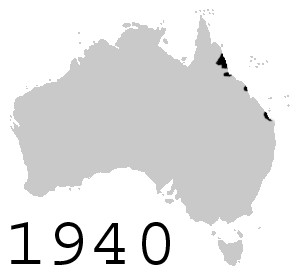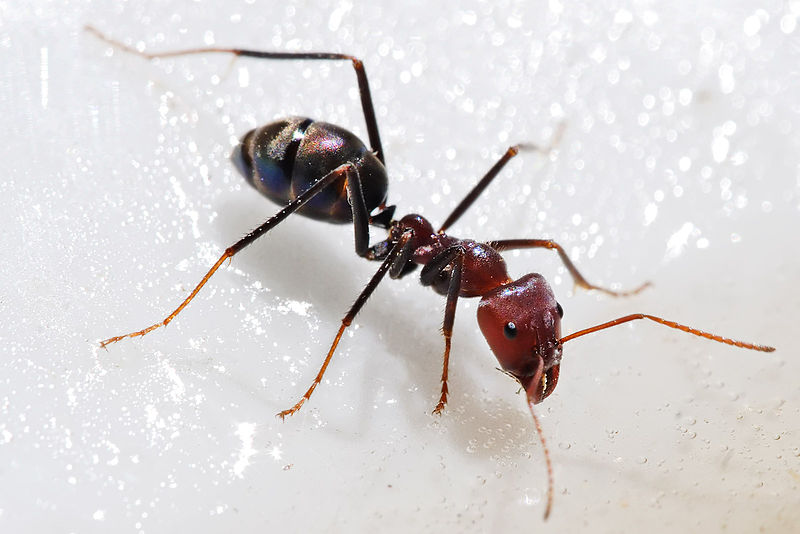![]() One of the most controversial ideas in conservation is that of Biocontrol. The goal is to control invasive species or damaging pests by introducing predators/diseases/etc which kill them. Some attempts at biocontrol have been hugely successful. But others have been disastrous, like the introduction of Cane Toads.
One of the most controversial ideas in conservation is that of Biocontrol. The goal is to control invasive species or damaging pests by introducing predators/diseases/etc which kill them. Some attempts at biocontrol have been hugely successful. But others have been disastrous, like the introduction of Cane Toads.
Cane Toads (Bufo marinus) were introduced to a lot of places from 1840-1940 to attempt to control agricultural pests.
They were first unsuccessfully introduced into Jamaica to control the rat population. Then, a seemingly successful introduction to Puerto Rico to control the sugarcane pest Phyllophaga spp. (white-grub) led to introductions all over the world, including Florida, Papua New Guinea, the Philippines, the Ogasawara and Ryukyu Islands of Japan, most Caribbean islands and many Pacific islands like Hawaii and Fiji. It is their introduction to Australia, however, that is seen as the best example of what can go wrong with biocontrol.
In Australia, Cane Toads were brought in to control the native Cane Beetle (Dermolepida albohirtum) - which they failed to do. Instead of eating the beetles, the toads seemed to enjoy eating anything and everything else they could get their mouths around. And weighing in at 3-5 lbs and averaging 6" long, they have a big mouth. Cane Toads have been seen feeding on everything from insects to small mammals, birds and snakes. Cane Toad predation has been fingered as the greatest risk to native biodiversity on Australia. And they don't just hurt what they eat. They have specialized poison glands for defense, and native foxes, reptiles and other predators are dying off from trying to eat the toxic toads. And the toads are spreading. In the 70 years since introduction, Cane Toads have spread to over four times the area they were introduced to, and migrating outward more each year. Populations have grown from a few thousand to hundreds of millions of toads.
It's a biological nightmare. An invasive species which reproduces quickly, outcompetes native fauna, is destroying the Australian ecosystem, and has few natural predators. Australian scientists have been trying desperately to find a solution to the growing problem these toads cause.
Now biologists are suggesting that the solution might just be, go figure, biocontrol. But this time they want to use a native species. It turns out Australian Meat Ants (Iridomyrmex purpureus), which are nasty little buggers that kill and eat small animals, could be a solution to the outbreak of Cane Toads. That's because new research has found that the invasive toads are more susceptible to the ants than the native amphibians.
The Cane Toads, it seems, have a few things working against them when it comes to ant predation. Firstly, they're active during the day which is when the ants are out to feed. The native species hide and sleep, keeping them out of the ants' way. Secondly, the Cane Toads don't seem to realize the threat, and are more likely than the native species to go near the ants. Lastly, the Cane Toads respond differently than the native species when attacked, moving away from the predator more slowly and giving the ants more opportunity to move in for the kill. Because they're toxic, researchers reasoned, they're not used to running from a threat - they generally sit there and have the predator give up. So a predator which doesn't care about the toxin and attacks anyhow is something new to the Cane Toads, something they have little defense against.
Researchers are hopeful that boosting the ant populations could be a real solution to the Cane Toads. However, they're cautious to endorse such a plan just yet. The ants are generalists, and when given the chance, attack native species at the same rate as the invasive toads. So increasing their numbers could do more harm than good. However, the fact that the Cane Toads are so much more susceptible to attack is promising. More research will focus on how to increase ant populations and how those increases actually affect native fauna. Hopefully, this new biocontrol will far outperform the last one, and won't just backfire, making two problematic biocontrol species instead of one.
UPDATE: Check out a video about this from the National Geographic Channel!
Georgia Ward-Fear, & et al (2009). Maladaptive traits in invasive species: in Australia, cane toads are more vulnerable to predatory ants than are native frogs Functional Ecology DOI: 10.1111/j.1365-2435.2009.01556.x




